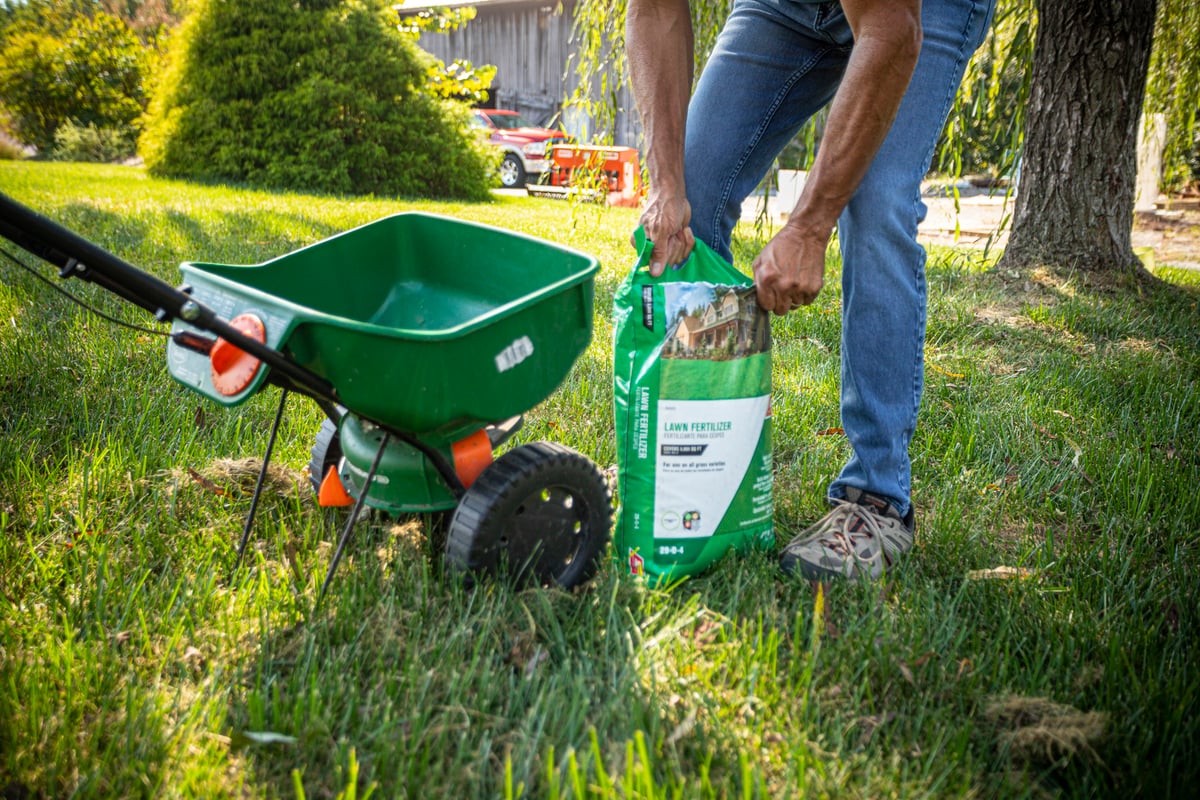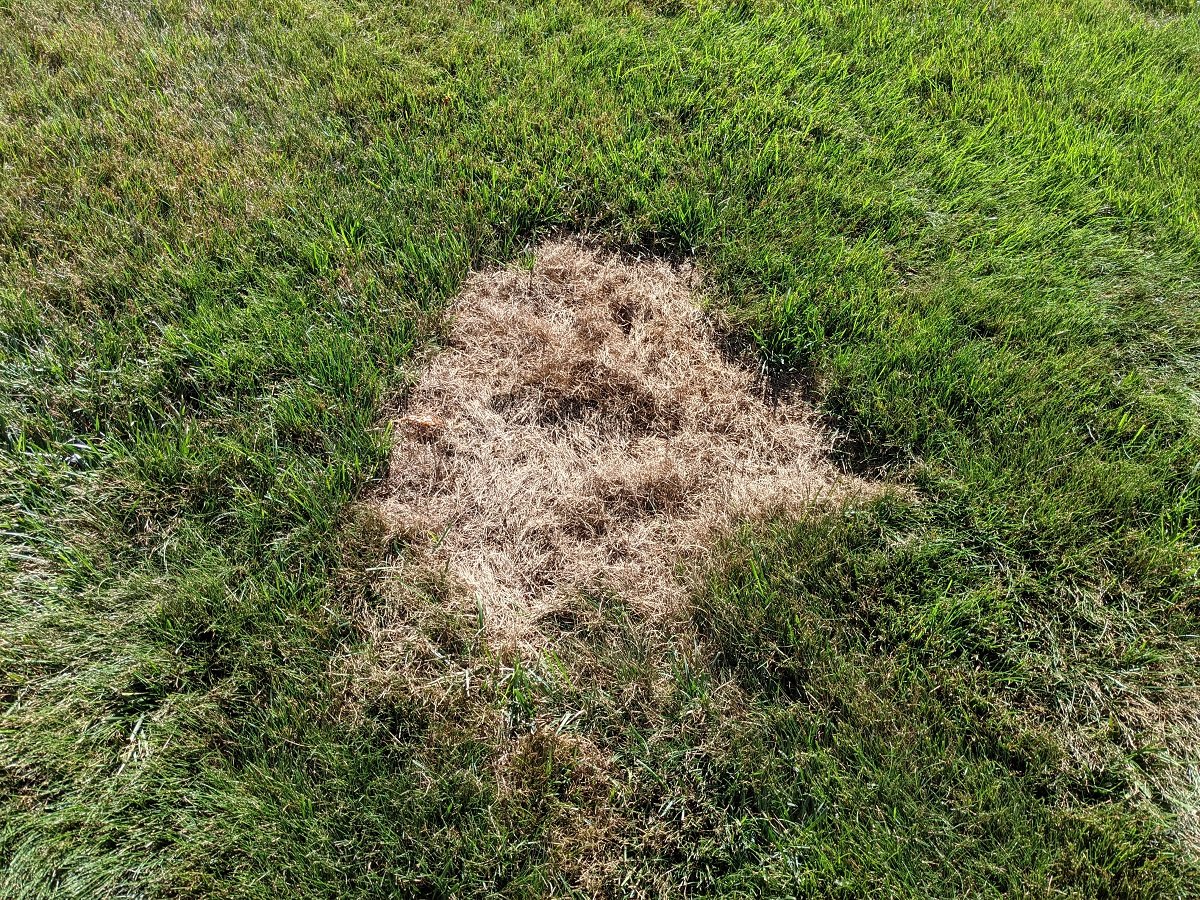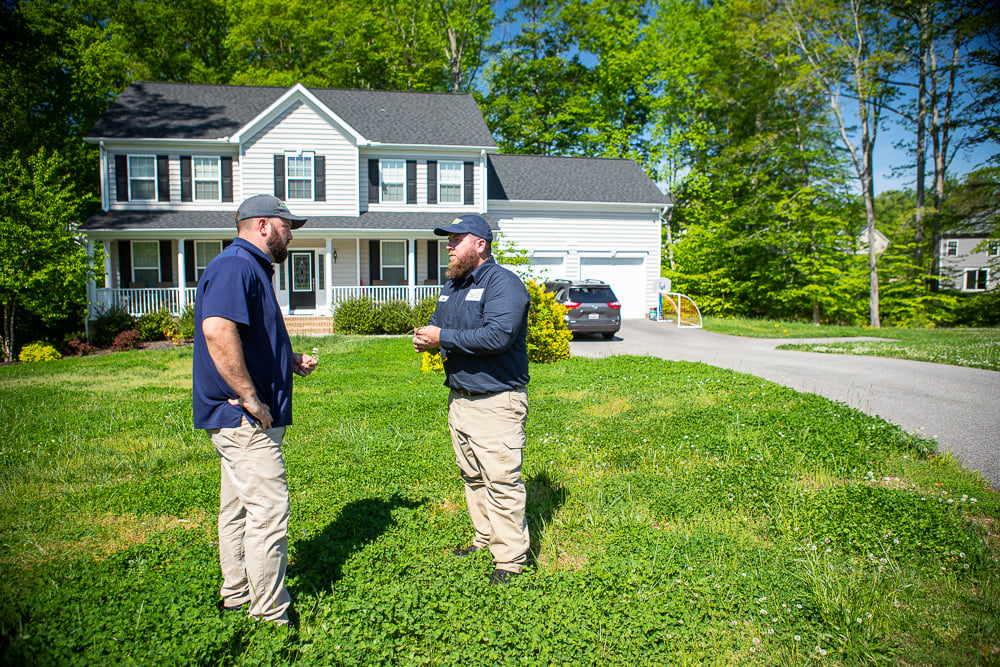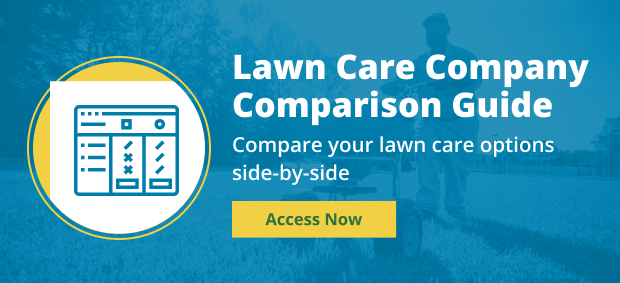Did You Over-Fertilize Your Lawn? How to Know and What to Do Next
Fertilizer is a good thing for your lawn in Central and Southern Maryland.
It provides your grass with nutrients like nitrogen, potassium, and phosphorus that can make it grow healthier, greener, and even thicker.
You might be thinking a little is great, why not add more? But like anything else, more is not always better. Let’s talk about what happens if you over-fertilize your lawn, what over-fertilization lawn symptoms look like, and how you can get your lawn back to good health.
Can You Over-fertilize Your Lawn?
Unfortunately, yes, it is true that over-fertilization is a common DIY lawn care mistake.
Since a lot of the advertising around lawn fertilizer centers around it being “lawn food,” it’s easy to see how you can make this error.
Use This Tool to Compare Your Local Lawn Care Companies
Plus, it takes well-calibrated and maintained equipment to apply lawn fertilizer correctly and in the proper amount to your entire lawn. It’s not just randomly spreading bags of a product across the grass.
 Another problem could be that your lawn soil is compacted and those nutrients are accumulating. Dog urine – if you have pets – could also contribute since it has a lot of nitrogen.
Another problem could be that your lawn soil is compacted and those nutrients are accumulating. Dog urine – if you have pets – could also contribute since it has a lot of nitrogen.
Unhealthy grass may also become more susceptible to suffering from over-fertilization lawn symptoms.
What Do Over-fertilization Lawn Symptoms Look Like?
Over-fertilization lawn symptoms may not be apparent to you right off the bat, so let’s review what you’re looking for.
 Over-fertilization shows up as a burned or scorched area, which will look yellow or brownish and even crispy. You might not see this across your entire lawn; you just might notice spots or tips.
Over-fertilization shows up as a burned or scorched area, which will look yellow or brownish and even crispy. You might not see this across your entire lawn; you just might notice spots or tips.
What To Do If You Over-fertilize Your Lawn
First of all, remain calm. Though it may look like it might be gone, your over-fertilized lawn isn’t necessarily beyond repair.
If you suspect you over-fertilized your grass or maybe even your lawn care service provider did it, you might be wondering what you can do next.
First of all, if it’s in areas where your dog commonly goes to the bathroom, then you might want to encourage your pet to go somewhere else like a mulched area.  If it’s in other areas of your lawn, check and see if it’s just your grass blades or tips and if your roots aren’t impacted. If the tips are just burned, then you might be able to reverse the damage.
If it’s in other areas of your lawn, check and see if it’s just your grass blades or tips and if your roots aren’t impacted. If the tips are just burned, then you might be able to reverse the damage.
Will an over-fertilized lawn come back? It depends.
First, if you see any excess fertilizer, removing it is a good step. If it’s granular, you can sweep it out, for instance.
 The next step is to water your lawn to help it bounce back. This can help your grass recover from the excess fertilizer build-up. The first day of watering is important, but so will be watering in the next one to two weeks. Water in the morning so water has time to soak in and does evaporate in the midday sun.
The next step is to water your lawn to help it bounce back. This can help your grass recover from the excess fertilizer build-up. The first day of watering is important, but so will be watering in the next one to two weeks. Water in the morning so water has time to soak in and does evaporate in the midday sun.
Inspect your lawn after a couple of weeks to check for new growth. That will be a good sign that you have brought your lawn back. If you don’t notice any new grass growing, you may want to contact a lawn care professional to take a look or plan to repair those areas with some overseeding with new grass seed.
Other Ways to Help Your Lawn Recover
There are some other steps you can take to repair your lawn and recover from over-fertilization lawn symptoms.
Aeration and overseeding is a great way to get some new growth and help repair and restore your lawn’s health.
Hire a Pro to Help You Avoid Over-fertilization Mistakes
Fertilization is a great service that can help your lawn receive the nutrients it needs to grow strong in Central and Southern Maryland.
But it has to be applied correctly in order for it to work.
Lawn care professionals are trained to fertilize properly. Companies focused on training and educating their teams on correct calibration and application techniques are the ones that will stand out above the rest. They will also be less likely to make mistakes and cause over-fertilization lawn symptoms.
Also, sometimes, you might think over-fertilization is the problem when it’s really a turf disease or pest problem. A lawn care expert will be able to properly spot this and address the right issue.
We know lawn care can be complicated. If you find you have questions or challenges, give Natural Green Systems a call. We can help you better understand what your lawn needs and take the heavy lifting off of your hands, so you can enjoy your grass all year long.
Looking to better care for your lawn? We’d love to help. Get started today with a free quote. Together, we’ll prepare a customized plan so you can have that lawn you long for.
Fertilizer is a good thing for your lawn in Central and Southern Maryland.
It provides your grass with nutrients like nitrogen, potassium, and phosphorus that can make it grow healthier, greener, and even thicker.
You might be thinking a little is great, why not add more? But like anything else, more is not always better. Let’s talk about what happens if you over-fertilize your lawn, what over-fertilization lawn symptoms look like, and how you can get your lawn back to good health.
Can You Over-fertilize Your Lawn?
Unfortunately, yes, it is true that over-fertilization is a common DIY lawn care mistake.
Since a lot of the advertising around lawn fertilizer centers around it being “lawn food,” it’s easy to see how you can make this error.
Use This Tool to Compare Your Local Lawn Care Companies
Plus, it takes well-calibrated and maintained equipment to apply lawn fertilizer correctly and in the proper amount to your entire lawn. It’s not just randomly spreading bags of a product across the grass.
 Another problem could be that your lawn soil is compacted and those nutrients are accumulating. Dog urine – if you have pets – could also contribute since it has a lot of nitrogen.
Another problem could be that your lawn soil is compacted and those nutrients are accumulating. Dog urine – if you have pets – could also contribute since it has a lot of nitrogen.
Unhealthy grass may also become more susceptible to suffering from over-fertilization lawn symptoms.
What Do Over-fertilization Lawn Symptoms Look Like?
Over-fertilization lawn symptoms may not be apparent to you right off the bat, so let’s review what you’re looking for.
 Over-fertilization shows up as a burned or scorched area, which will look yellow or brownish and even crispy. You might not see this across your entire lawn; you just might notice spots or tips.
Over-fertilization shows up as a burned or scorched area, which will look yellow or brownish and even crispy. You might not see this across your entire lawn; you just might notice spots or tips.
What To Do If You Over-fertilize Your Lawn
First of all, remain calm. Though it may look like it might be gone, your over-fertilized lawn isn’t necessarily beyond repair.
If you suspect you over-fertilized your grass or maybe even your lawn care service provider did it, you might be wondering what you can do next.
First of all, if it’s in areas where your dog commonly goes to the bathroom, then you might want to encourage your pet to go somewhere else like a mulched area.  If it’s in other areas of your lawn, check and see if it’s just your grass blades or tips and if your roots aren’t impacted. If the tips are just burned, then you might be able to reverse the damage.
If it’s in other areas of your lawn, check and see if it’s just your grass blades or tips and if your roots aren’t impacted. If the tips are just burned, then you might be able to reverse the damage.
Will an over-fertilized lawn come back? It depends.
First, if you see any excess fertilizer, removing it is a good step. If it’s granular, you can sweep it out, for instance.
 The next step is to water your lawn to help it bounce back. This can help your grass recover from the excess fertilizer build-up. The first day of watering is important, but so will be watering in the next one to two weeks. Water in the morning so water has time to soak in and does evaporate in the midday sun.
The next step is to water your lawn to help it bounce back. This can help your grass recover from the excess fertilizer build-up. The first day of watering is important, but so will be watering in the next one to two weeks. Water in the morning so water has time to soak in and does evaporate in the midday sun.
Inspect your lawn after a couple of weeks to check for new growth. That will be a good sign that you have brought your lawn back. If you don’t notice any new grass growing, you may want to contact a lawn care professional to take a look or plan to repair those areas with some overseeding with new grass seed.
Other Ways to Help Your Lawn Recover
There are some other steps you can take to repair your lawn and recover from over-fertilization lawn symptoms.
Aeration and overseeding is a great way to get some new growth and help repair and restore your lawn’s health.
Hire a Pro to Help You Avoid Over-fertilization Mistakes
Fertilization is a great service that can help your lawn receive the nutrients it needs to grow strong in Central and Southern Maryland.
But it has to be applied correctly in order for it to work.
Lawn care professionals are trained to fertilize properly. Companies focused on training and educating their teams on correct calibration and application techniques are the ones that will stand out above the rest. They will also be less likely to make mistakes and cause over-fertilization lawn symptoms.
Also, sometimes, you might think over-fertilization is the problem when it’s really a turf disease or pest problem. A lawn care expert will be able to properly spot this and address the right issue.
We know lawn care can be complicated. If you find you have questions or challenges, give Natural Green Systems a call. We can help you better understand what your lawn needs and take the heavy lifting off of your hands, so you can enjoy your grass all year long.
Looking to better care for your lawn? We’d love to help. Get started today with a free quote. Together, we’ll prepare a customized plan so you can have that lawn you long for.
Share This
Topics: Lawn Care


